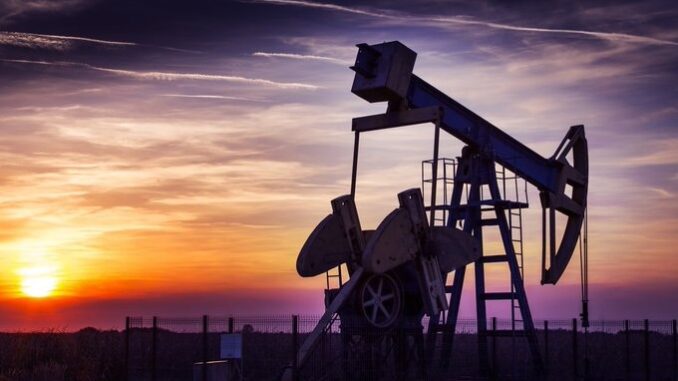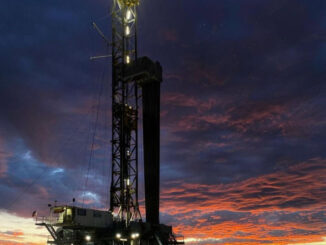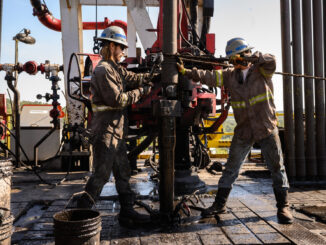
The U.S. shale oil industry, a cornerstone of global energy supply, is facing a pivotal shift. According to recent analysis from energy intelligence firm Enverus, the marginal cost of U.S. shale oil production is projected to escalate from around $70 per barrel today to as high as $95 per barrel by the mid-2030s.
This forecast signals the end of an era of relatively low-cost shale extraction, driven by depleting high-quality reserves and mounting operational challenges. As the industry matures, producers will increasingly turn to lower-tier inventories, pushing breakeven prices higher and potentially reshaping global oil markets.Key Drivers Behind the Cost SurgeSeveral interconnected factors are contributing to this anticipated rise in shale production costs. While resource depletion stands out as the primary culprit, escalating expenses in materials, regulatory compliance, and environmental management are exacerbating the trend.
Resource Depletion and Inventory Shift
The core issue lies in the exhaustion of “Tier 1” drilling locations—prime spots in major basins where extraction is most efficient and cost-effective. As these high-yield areas diminish, operators must move to more marginal reserves, which require advanced techniques, longer laterals, and higher capital intensity. Enverus estimates this shift alone could add $15 to $25 per barrel to marginal costs by the 2030s.
Are you Paying High Taxes in New Jersey, New York, or California?
Industry surveys echo this, with executives noting that regulatory changes and resource constraints have already nudged breakeven costs upward in recent years.
Steel and Material CostsSteel, essential for well casings, tubular goods, and infrastructure, represents a significant portion of upstream expenses. Historical data from the U.S. Energy Information Administration (EIA) highlights how fluctuations in steel prices directly impact drilling costs, particularly in shale operations where deep horizontal wells demand high volumes of specialized steel.
Recent supply chain disruptions, inflation, and global trade tensions have driven steel prices higher, adding to the burden. For instance, post-pandemic recovery and ongoing geopolitical issues have increased material costs by 5-10% annually in some estimates, compounding the depletion effect.
Regulatory PressuresEvolving environmental and operational regulations are another major headwind.
Since early 2021, federal and state policies have tightened permitting processes, emissions standards, and land use restrictions, particularly in sensitive areas. A Dallas Fed survey indicates that 57% of executives believe these changes have reduced breakeven efficiency for new wells.
Political and regulatory uncertainties, including potential shifts in energy policy, could further inflate compliance costs, estimated at $2-5 per barrel in affected regions.
While aimed at sustainability, these measures slow development and increase overhead.Water Treatment and ManagementWater is a critical input in hydraulic fracturing (fracking), the backbone of shale production, but managing produced water—brine extracted alongside oil—poses growing challenges. Produced water volumes can exceed oil output by 3-10 times in mature wells, necessitating advanced treatment for reuse, disposal, or discharge.
Costs for treatment technologies, such as desalination and chemical processing, have risen due to stricter environmental regulations and water scarcity in arid basins. In Texas and New Mexico, where shale activity is concentrated, produced water management constraints are already curbing output growth.
Industry reports suggest these expenses could add $1-3 per barrel, with further increases if seismic activity linked to disposal wells prompts additional restrictions.
Other Contributing FactorsBeyond these, labor shortages, inflationary pressures on equipment, and supply chain vulnerabilities are amplifying costs. The industry’s shift toward capital discipline—prioritizing free cash flow over volume growth—means less investment in efficiency gains.
Sharp well decline rates in shale (up to 70% in the first year) also necessitate continuous drilling, perpetuating the cycle of higher expenditures.
Cost Verification Per Major Shale Basin
While the $95 per barrel forecast represents a national marginal cost average, breakeven prices vary significantly by basin due to geological differences, infrastructure maturity, and local factors. Below is a breakdown based on 2024-2025 data, with projections noting potential rises tied to the broader trends.Basin
Less affected by shale-specific depletion, but still facing material and regulatory hikes.
These figures are derived from industry surveys and analytics, with the Permian Basin—accounting for over 40% of U.S. output—likely to experience the most pronounced increases as it dominates future supply.
Forecasts indicate that without technological breakthroughs, such as enhanced recovery or AI-driven efficiencies, these basins could see breakevens
|
Basin
|
Current Breakeven (New Wells, $ per Barrel)
|
Key Cost Drivers
|
Projected Impact by 2030s
|
|---|---|---|---|
|
Permian (Delaware Sub-Basin)
|
$56-64
|
Abundant infrastructure, but water scarcity and depletion accelerating. Water treatment costs here are among the highest due to high salinity levels.
|
Costs could rise 20-30% as Tier 1 inventory depletes, pushing toward $75-85. Regulations on flaring and seismicity add pressure.
|
|
Permian (Midland Sub-Basin)
|
$60-66
|
Mature development with good access to steel and materials, but regulatory scrutiny increasing.
|
Similar to Delaware, expect escalation to $80-90 amid resource shifts and material inflation.
|
|
Eagle Ford
|
$66-67
|
Higher water and regulatory costs; less infrastructure than Permian.
|
More vulnerable to depletion, potentially hitting $85-95 earlier due to smaller scale and environmental constraints.
|
|
Bakken
|
$63-65 (Other U.S. Shale average)
|
Cold climate increases operational costs; steel transport adds expense.
|
Regulatory and water issues less acute, but overall costs may align with national rise to $80-90.
|
|
Other U.S. (Non-Shale)
|
$66
|
Varied, but often higher due to conventional methods.
|
Less affected by shale-specific depletion, but still facing material and regulatory hikes.
|
These figures are derived from industry surveys and analytics, with the Permian Basin—accounting for over 40% of U.S. output—likely to experience the most pronounced increases as it dominates future supply.
Forecasts indicate that without technological breakthroughs, such as enhanced recovery or AI-driven efficiencies, these basins could see breakevens
As this information is speculative, we need to keep in mind that not all basins will have the same market impacts. As we evaluate individual well economics, the investments that oil and gas companies are making are leveraging AI, while also relying on years of expertise and a can-do spirit. We have the greatest oil and gas workforce on the planet, and right now we have an adminstration that will do the best they can to help keep regulations and costs down.
That being said, it is often overlooked that cheap oil and gas do not cover the costs of new oil and gas exploration, and we have experienced record-low years in exploration. As Michael Tanner on the Energy News Beat podcast says, “The oil and gas market is cyclical and companies will survive when they plan properly.” Investing in the United States energy, oil, and gas is one of the highest-returning to shareholder value segments in the markets, and it is due to the commitments made by the CEOs of the oil and gas industry. You have not seen that kind of commitment from the renewable wind, solar, or hydrogen markets.
Avoid Paying Taxes in 2025
Crude Oil, LNG, Jet Fuel price quote
ENB Top News
ENB
Energy Dashboard
ENB Podcast
ENB Substack






Be the first to comment